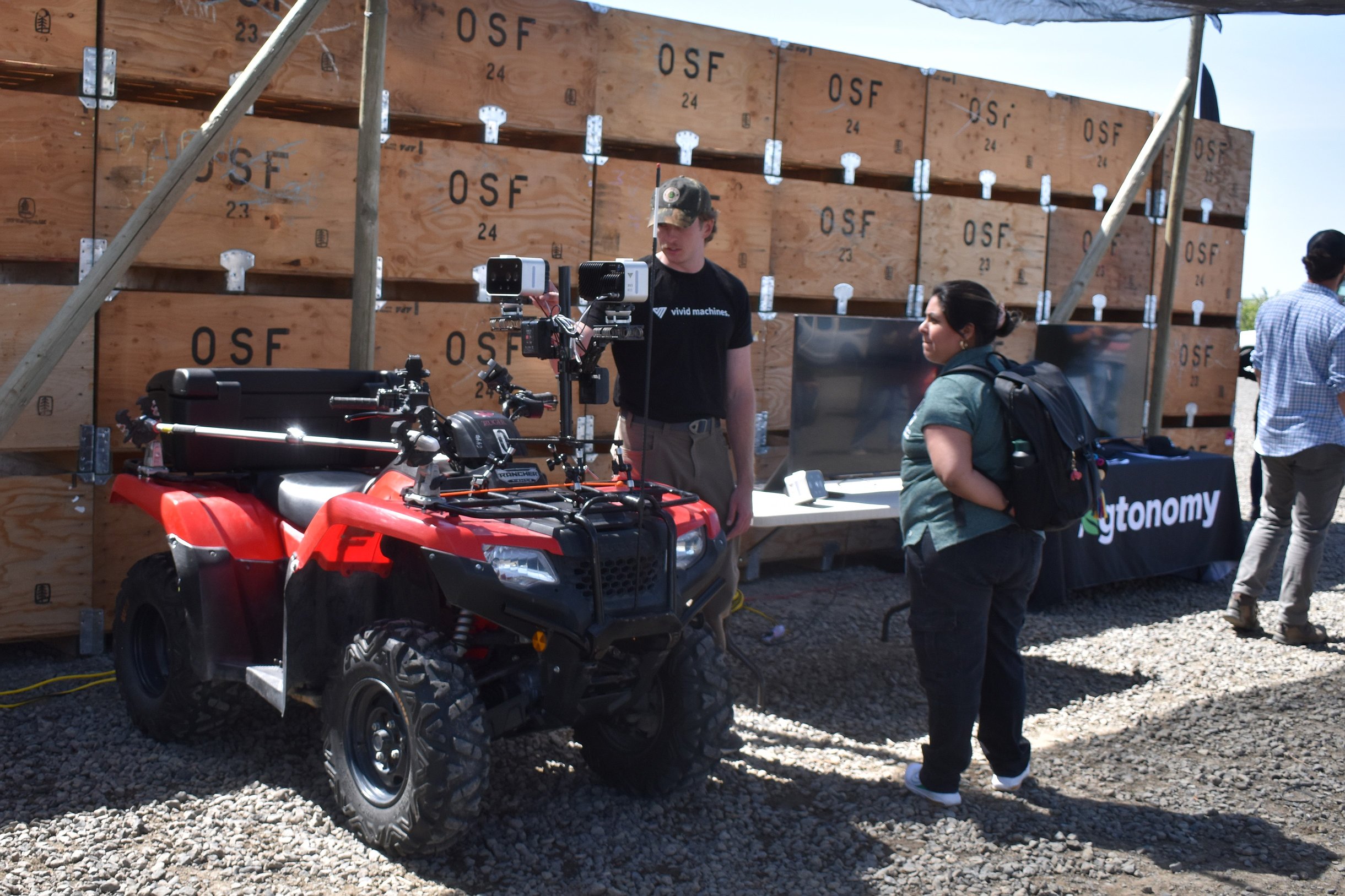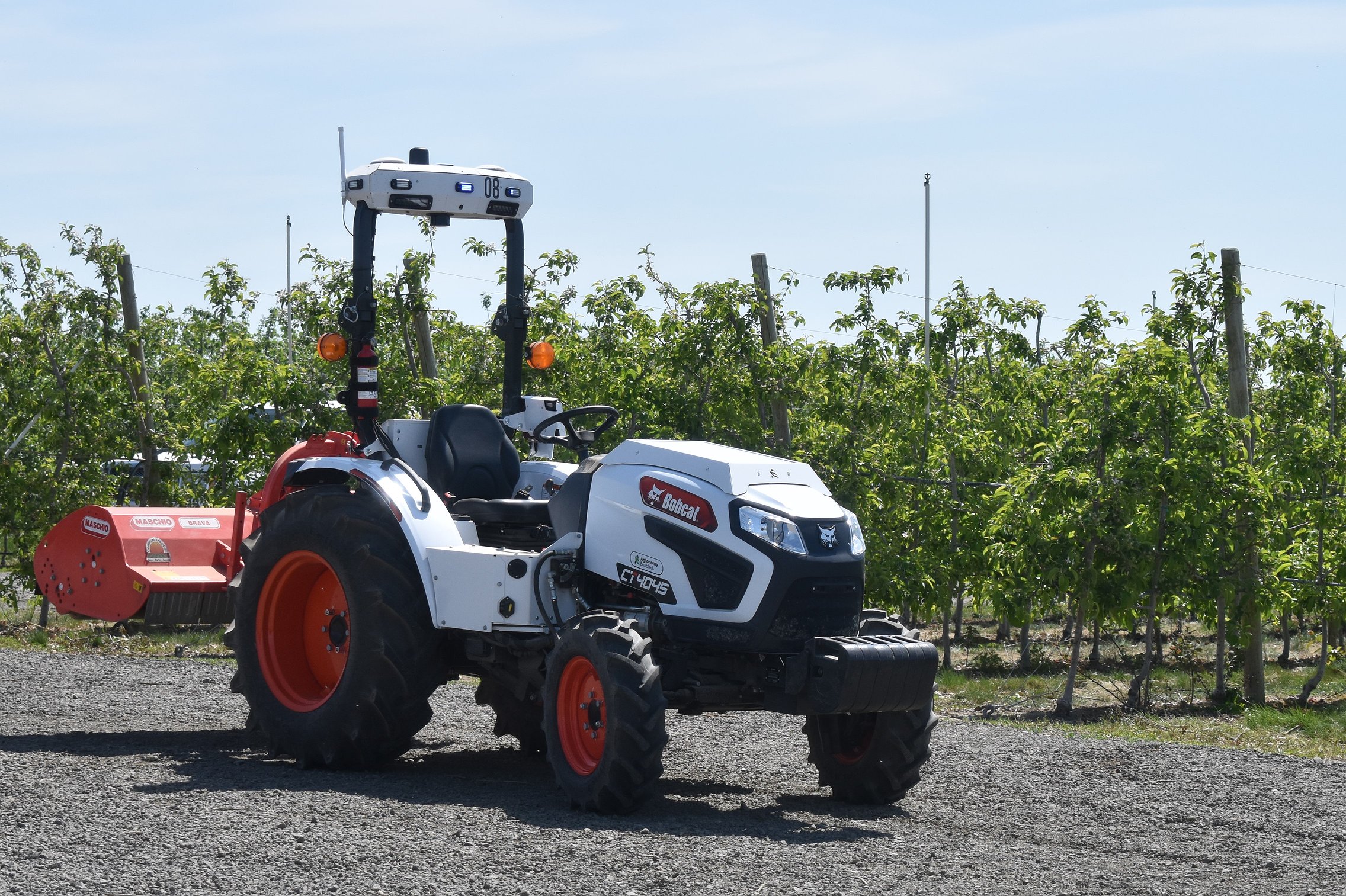OSF presents the Farm of the Future
MOSES LAKE – Okanagan Specialty Fruit hosted their Farm of the Future event on April 30 to showcase the recent developments in the farming industry and their vision on what the future of farming will be in the coming years.
“As you try to think of ways to solve today’s challenges and with the background I have in terms of tech is how we go about doing that,” said Okanagan Specialty Fruits Co-Founder and CEO Neal Carter. “A big problem is our orchards are very expensive to produce, capital intensive to plant, to train structures, and we can just simplify the whole system, make it less capital intensive, make it less capital intensive, make it more pedestrian, labor friendly.”
Seminars were held at Big Bend Community College where speakers from businesses and local leaders spoke about exactly how they plan to solve these issues with innovations for the farm of the future and how they plan to better recruit, train and equip the workforce for the future, said Sarah Evanega, Vice President of Business Development at OSF.
The technology for the farm of the future were put on display with the first stop being the Okanagan Specialty Fruits apple processing plant in Moses Lake.
OSF opened their fruit processing facility in Moses Lake in September of 2023 which features an advanced system for slicing and packaging their apples. Once the facility receives the apples from the orchard they are then pushed through a machine that uses optical sorting to scan the apples both externally and internally for defects.
“It’s going to sort out any of your defects, some of the internal defects, could be external defects, it could be color variation,” said Megan Beason who was one of the tour guides through the factory.
The apples are then sorted by weight and size and once a sorting lane is full robotic sweepers place the apples into a bin where they are then labeled and put into storage until they are ready to be sliced. Once the apples go through slicing, they are then loaded into bags which are boxed and shipped out, said Beason.
OSF has also developed a variety of non-browning apples called Arctic apples. Kim Redden the marketing manager for Arctic Apples and OSF said this has been a project they’ve been working on since the late 90s and received regulatory approval to create in 2015. The first apples began coming off the trees in 2018.
“We were able to silence the browning gene inside of the apple by using the apples own genes to do that,” said Redden. “Essentially what you’re doing is you’re just telling the apple not to express the browning gene.”
With this new development in fruit gene science, OSF can now adapt any normal variety of apple into a non-browning Arctic variety, she said.
“We’re using all the tools in the toolbox and looking at genetics and the work we do at OSF,” said Carter. “Genetics will allow us to do things that many people haven’t even contemplated.”
Companies like Agrimacs, Agtonomy, Burrows Tractor, Innov8ag, Myland, Almanac’s Semios+Agworld and Vivid Machines displayed a variety of new farming technology that both tackled issues with labor and made improvements to the growing process. These were showcased at OSF’s Skyline orchards where they’ve been growing a large portion of their apples that they process at their plant in Moses Lake.
Myland has been working on ways to implement native microalgae to the soil at the farms to help build nutrients in the soil. Thad Schutt from Myland said they have a pond on the outer end of the farm that cultivates the algae and injects it into the irrigation system where it then is spread throughout and feeds the other biology that resides in the soil.
“You’re continually spoon feeding that biology, which reduces the stress on the plants, gives you organic matter, carbon, increasing the porosity of the soil,” said Schutt. “It’s increasing that nutrient cycling too for the plant, for better health, better yeild and better quality of the fruit and produce.”
Innov8ag and Semios+Agworld are both working on new technology that will assist farmers in the process of overseeing and managing what they are growing.
Freddy Valdovinos of Innov8ag displayed their Green Atlas data setup that shows data and images of the crops taken from a side-by-side hooked up with a camera system that shows how they’re growing and if the chemical makeup of the soil affects growth of the plants. This allows them to collect leaf area, vigor, blossom counts, fruitlet counts and size and color of the fruits as well as data from the soil itself that informs farmers what minerals might be in abundance or lacking in the soil.
“This way when green growers look at this data, it’s not just throwing data at them, they can make informed decisions” said Valdovinos.
Almanac has put a focus on using the technologies that Semios and Agworld provide to aid in the push toward the farm of the future. Dave Brown from Almanac said Semios focuses mainly on technology like camera traps, weather stations and soil probes while Agworld is more for dealing with farm management and operations.
Brown said his company has begun to put a focus on data that helps growers manage workflow. These data sets are mostly for the individual farmers to keep track of their farm’s operational efficiency and how to improve it. However, the data may also provide valuable insights to retailers that the farmer can share with them.
“It’s built to be very collaborative,” said Brown. “It’s meant to bring together the advisor, the retailer, the grower so that they can share data across each other and each of them does their job a little bit better.”
New farming equipment has been designed to reduce the amount of labor necessary to harvest and ensure the best quality fruits are being picked.
Agrimacs president Tim McLaughlin and Vice President Mark Stennes said they have been in business with Skyline Orchards for around 10 years, aiding with horticulture, pruning, thinning, picking, labor and materials. Recently, they have begun implementing machines with more advanced hedge pruning capabilities at the orchard.
Stennes said the equipment allows for harvesting with purpose. The machine can identify which fruit is less visually appealing for use in apple sauce or similar products, while saving the more visually appealing fruit for produce section sales.
Stennes said with the new hedge pruning technology reducing hand labor, they have found the machines save orchards around $1,200 to $1,500 an acre.
Companies like Agtonomy, Burrows Tractor and Vivid Machines have also been using their technology on the farms at Skyline to reduce the amount of necessary labor. Vivid Machines has installed cameras with multiple different lenses that collect data and provide real time insights and Agtonomy has been developing software that automates farming equipment from agricultural manufacturers.
“We focus on the sensor stack, the software to control the vehicles to get the jobs done without the need of a lot of labor,” said Agtonomy CEO Tim Bucher. “Especially in areas where labor is an issue, which is a lot of areas of agriculture these days.”
Carter said the farming industry is something that needs to be brought back through cost cutting and hopes that farmers can use the new technology shown at the Farm of the Future event to do that.










